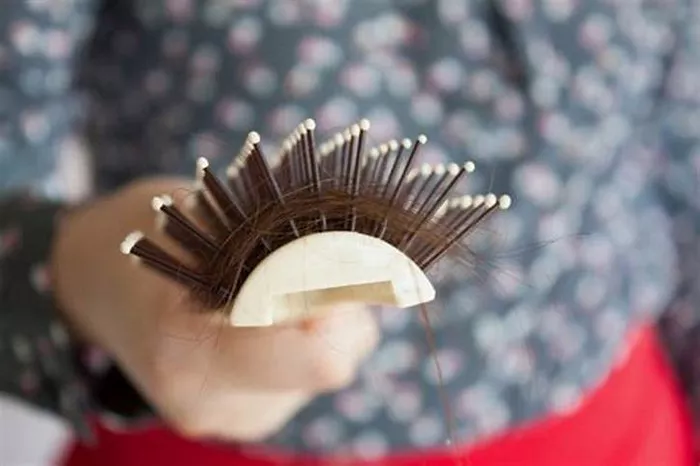Scarring alopecia, also known as cicatricial alopecia, represents a challenging category of hair loss disorders characterized by irreversible damage to hair follicles. The prospect of regrowth in scarring alopecia raises questions and concerns for individuals grappling with this condition. In this article, we will explore the complexities of scarring alopecia and investigate the potential for hair regrowth in the face of such challenging circumstances.
Understanding Scarring Alopecia: A Distinct Challenge
Distinctive Characteristics:
Scarring alopecia involves the destruction and replacement of hair follicles with scar tissue.
This differs from non-scarring alopecias, where hair follicles remain intact despite hair loss.
Varied Causes:
Scarring alopecia can result from diverse causes, including autoimmune diseases, inflammatory conditions, infections, and trauma.
Identifying the underlying cause is crucial for determining treatment options.
The Nature of Scarring: A Barrier to Regrowth
Permanent Damage to Follicles:
Scar tissue in scarring alopecia replaces functional hair follicles, hindering the potential for natural regrowth.
The irreversible nature of scarring poses a significant challenge.
Cicatricial Processes:
Cicatricial processes involve the formation of scar tissue that disrupts the normal structure and function of the hair follicle.
Once scarring occurs, regenerating hair from scar tissue becomes exceedingly difficult.
Types of Scarring Alopecia: Variations in Challenges
Lichen Planopilaris (LPP):
LPP is an inflammatory scarring alopecia where the immune system targets hair follicles, leading to scarring.
The progressive nature of LPP poses challenges for regrowth.
Frontal Fibrosing Alopecia (FFA):
FFA primarily affects the frontal hairline and eyebrows, leading to scarring.
The impact on cosmetic appearance underscores the importance of exploring regrowth options.
Potential for Regrowth: An Elusive Promise
Limited Spontaneous Regrowth:
Unlike non-scarring alopecias, scarring alopecia is associated with limited spontaneous regrowth.
Scar tissue impedes the natural hair growth cycle.
Early Intervention and Inflammatory Control:
Early intervention and effective control of inflammation are crucial to mitigate further scarring.
Controlling the underlying inflammatory processes may have some impact on regrowth in specific cases.
Medical Interventions for Scarring Alopecia
Topical Treatments and Corticosteroids:
Topical corticosteroids may be prescribed to address inflammation in certain types of scarring alopecia.
However, the efficacy varies, and the potential for significant regrowth is limited.
Systemic Treatments:
Systemic treatments, such as oral corticosteroids or immunosuppressive medications, aim to control inflammation throughout the body.
These treatments may slow the progression of scarring but are not guaranteed to induce regrowth.
Hair Transplants:
Hair transplants involve surgically implanting hair follicles from unaffected areas into scarred regions.
Success depends on the availability of donor hair and the extent of scarring.
Challenges in Hair Transplants for Scarring Alopecia
Limited Donor Supply:
The success of hair transplants for scarring alopecia is hindered by the limited availability of healthy donor hair.
Extensive scarring may restrict the donor supply.
Risk of Transplanted Hair Scarring:
Scarring alopecia’s continued presence poses a risk of the transplanted hair succumbing to the same cicatricial processes.
Long-term success depends on managing the underlying inflammatory conditions.
Future Directions: Research and Innovations
Ongoing Research:
Ongoing research aims to unravel the complexities of scarring alopecia and explore innovative treatment approaches.
Advances in regenerative medicine and hair follicle cloning hold promise for future interventions.
Regenerative Medicine:
Regenerative medicine approaches, such as stem cell therapies, are being investigated for their potential to regenerate damaged hair follicles.
While still in the experimental stage, these therapies represent a beacon of hope.
Conclusion
In conclusion, the potential for hair regrowth after scarring alopecia is a complex and challenging aspect of hair loss. The irreversible nature of scarring poses significant obstacles to natural regrowth. While certain medical interventions and hair transplants may offer limited possibilities, long-term success depends on managing underlying inflammatory conditions and addressing the unique challenges posed by scarring alopecia. Ongoing research and innovations in regenerative medicine hold promise for the future, offering hope to individuals grappling with the impact of scarring alopecia on their lives and self-esteem. It is crucial for those affected to consult with dermatologists specializing in hair disorders to explore the most suitable options based on their individual circumstances.

